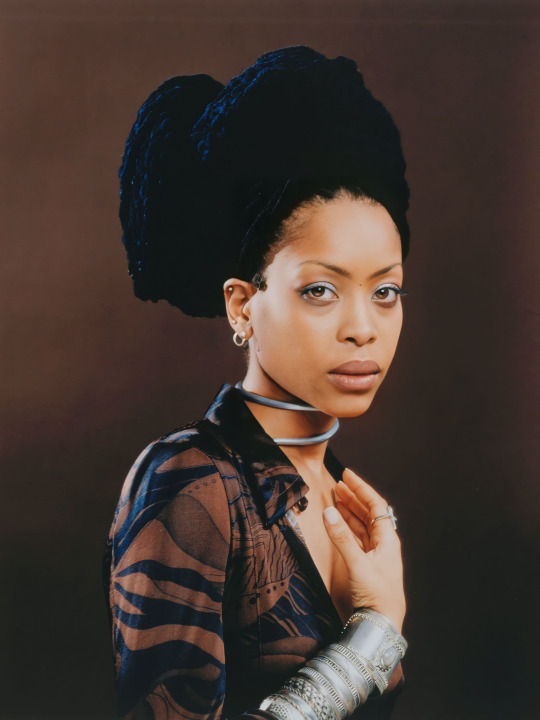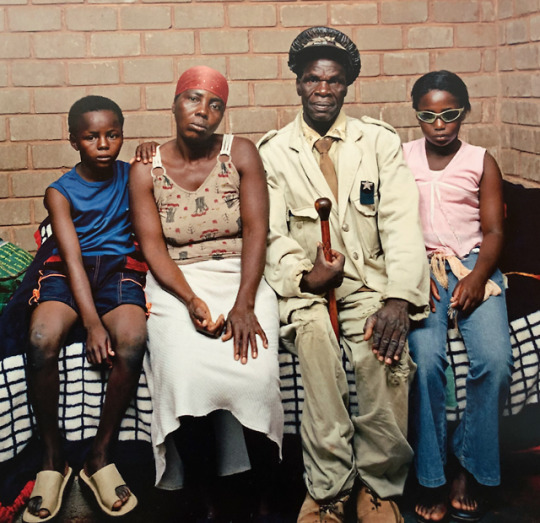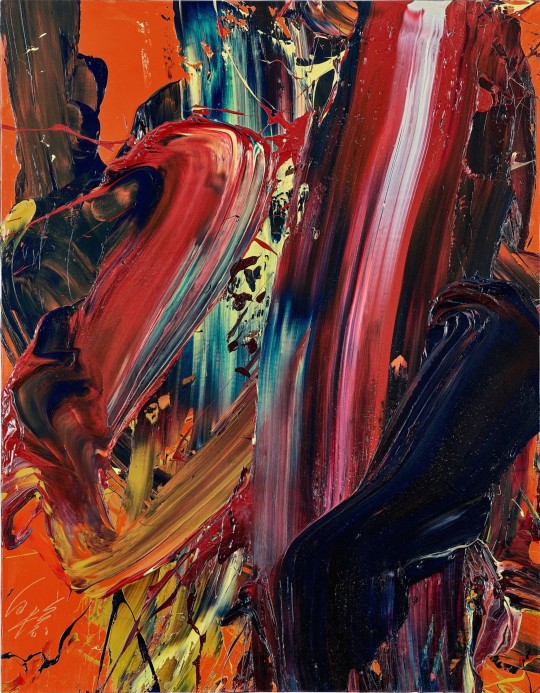Don't wanna be here? Send us removal request.
Photo









Huey Newton
Huey Percy Newton (February 17, 1942 – August 22, 1989) was an African-American political and urban activist who, along with Bobby Seale, co-founded the Black Panther Party in 1966. Newton had a long series of confrontations with law enforcement, including several convictions, while he participated in political activism. He continued to pursue an education, eventually earning a Ph.D. in Social Science. Newton spent time in prison for manslaughter due to his alleged involvement in a shooting that killed a police officer, but was later acquitted. In 1989 he was shot and killed in Oakland, California, by Tyrone “Double R” Robinson, a member of the Black Guerrilla Family.
Biography
Background
Newton was born in Monroe, Louisiana. He was the youngest of seven children of Armelia Johnson and Walter Newton, a sharecropper and Baptist lay preacher. His parents named him after former Governor of Louisiana Huey Long. In 1945, the family migrated to Oakland, California as part of the second wave of the Great Migration of African Americans out of the South to the Midwest and West. The Newton family was quite poor and often relocated throughout the San Francisco Bay Area during Newton’s childhood. But, he said his family was close-knit, and he never went without food and shelter as a child. Growing up in Oakland, Newton stated that “[he] was made to feel ashamed of being black.” In his autobiography, Revolutionary Suicide, he wrote,
“During those long years in Oakland public schools, I did not have one teacher who taught me anything relevant to my own life or experience. Not one instructor ever awoke in me a desire to learn more or to question or to explore the worlds of literature, science, and history. All they did was try to rob me of the sense of my own uniqueness and worth, and in the process nearly killed my urge to inquire.”
Newton graduated from Oakland Technical High School in 1959, without being able to read. He later taught himself to read, going on to read The Republic by Plato as his first book. As a teenager, he was arrested several times for minor offenses, including gun possession and vandalism at age 14.
Newton supported himself in college by burglarizing homes in the Oakland and Berkeley Hills areas, and by committing other petty crimes. Newton once wrote that he began his law studies to become a better criminal, although he said that he had been a “big-time fool” for having such narrow ambitions.
Founding of the Black Panther Party
As a student at Merritt College in Oakland, Newton became involved in politics in the Bay Area. He joined the Afro-American Association, became a prominent member of Phi Beta Sigma fraternity, Beta Tau chapter; and played a role in getting the first African-American history course adopted as part of the college’s curriculum. He read the works of Karl Marx, Vladimir Lenin, Frantz Fanon, Malcolm X, Mao Zedong, and Che Guevara. During his time at Merritt College, Newton and Bobby Seale organized the Black Panther Party for Self Defense in October 1966. Based on a casual conversation, Seale became Chairman and Newton became Minister of Defense.
The Black Panther Party was an African-American left-wing organization working for the right of self-defense for African Americans in the United States. The Party achieved national and international renown through their deep involvement in the Black Power movement and in politics of the 1960s and 1970s. The Party’s political goals, including better housing, jobs, and education for African Americans, were documented in their Ten-Point Program. The group believed that violence - or the threat of it - might be needed to bring about social change. They sometimes made news with a show of force, as they did when they entered the California Legislature fully armed in order to protest a gun bill.
Newton adopted what he termed “revolutionary humanism”. Although he had earlier visited Nation of Islam mosques, he wrote that “I have had enough of religion and could not bring myself to adopt another one. I needed a more concrete understanding of social conditions. References to God or Allah did not satisfy my stubborn thirst for answers.” Later, however, he stated that “As far as I am concerned, when all of the questions are not answered, when the extraordinary is not explained, when the unknown is not known, then there is room for God because the unexplained and the unknown is God.” But Newton later decided to join the Church after the party disbanded during his marriage to Fredrika.
Newton would frequent pool halls, campuses, bars and other locations deep in the Black community where people gathered, to organize and recruit for the Panthers. Newton wrote in his autobiography, “I tried to transform many of the so-called criminal activities going on in the street into something political, although this had to be done gradually.” He attempted to channel these “daily activities for survival” into significant community actions. Eventually, however, the illicit activities of a few members would be superimposed on the social program work performed by the Panthers, and this mischaracterization would lose them support in both the white and black communities.
Newton and the Panthers started a number of social programs in Oakland, including founding the Oakland Community School, which provided high-level education to 150 children from impoverished urban neighborhoods. Other Panther programs included the Free Breakfast for Children Program and others that offered dances for teenagers and training in martial arts. According to Oakland County Supervisor John George: “Huey could take street-gang types and give them a social consciousness”.
In 1982, Newton was accused of embezzling $600,000 of state aid to the Panther-founded Oakland Community School. In the wake of the embezzlement charges, Newton disbanded the Black Panther Party. After six years, the embezzlement charges were dropped in March 1989, after Newton pleaded no contest to a single allegation of cashing a $15,000 state check for personal use. Newton was sentenced to six months in jail and 18 months probation. He had also expressed support for Palestinian independence.
Fatal shooting of John Frey
Newton had been convicted of assault with a deadly weapon for repeatedly stabbing another man, Odell Lee, with a steak knife in mid-1964. He served six months in prison and by October 27–28, 1967, he was out celebrating release from his probationary period. Just before dawn on October 28, Newton and a friend were pulled over by Oakland Police Department officer John Frey. Realizing that he had stopped Black Panther leader Huey Newton, Frey called for backup. After fellow officer Herbert Heanes arrived, shots were fired, and all three were wounded. Heanes testified that the shooting began after Newton was under arrest, and one witness testified that Newton shot Frey with Frey’s own gun as they wrestled. No gun on either Frey or Newton was found. Newton stated that Frey shot him first, which made him lose consciousness during the incident. Frey was shot four times and died within the hour, while Heanes was left in serious condition with three bullet wounds. Black Panther David Hilliard took Newton to Oaklands’s Kaiser Hospital, where he was admitted with a bullet wound to the abdomen. Newton was soon handcuffed to his bed and arrested for Frey’s killing. Newton was convicted in September 1968 of voluntary manslaughter for the killing of Frey and was sentenced to 2 to 15 years in prison. In May 1970, the California Appellate Court reversed the conviction and ordered a new trial. After two subsequent trials ended in hung juries, the district attorney said he would not pursue a fourth trial, and the Alameda County Superior Court dismissed the charges. In his autobiography, Revolutionary Suicide, Newton wrote that Heanes and Frey were opposite each other and shooting in each other’s direction during the shootout.
In his book Shadow of the Panther, writer Hugh Pearson alleges that Newton, while intoxicated in the hours before he was shot and killed, claimed to have willfully killed John Frey. Although this claim has been repeated elsewhere based on Pearson’s account, the allegation remains contentious, and has not been corroborated by others.
Allegations of violence
On August 6, 1974, Kathleen Smith, a 17-year-old Oakland native, was shot; she died three months later. According to the prosecutor handling the case, Newton shot Smith after a casual exchange on the street during which she referred to him as “Baby”, a childhood nickname he hated. Pearson alleges that shortly after the killing, while staying with film producer Bert Schneider in Beverly Hills, Newton referred to the Smith killing as his “first non-political murder.”
Newton is also alleged to have assaulted his tailor, Preston Callins, after Callins called him “Baby”. Newton posted bond after being arrested for pistol-whipping Callins. Newton was subsequently arrested a second time for the murder of Smith, but was able to post an additional $80,000 bond, thus securing his release until trial.
Newton and his girlfriend (later his wife) Gwen Fontaine then fled to Havana, Cuba, where they lived until 1977, which prevented further prosecution on the two charges. Elaine Brown took over as chairperson of the Black Panther Party in his absence. Newton returned to the United States in 1977 to stand trial for the murder of Smith and the assault on Callins.
In October 1977, three Black Panthers attempted to assassinate Crystal Gray, a key prosecution witness in Newton’s upcoming trial who had been present the day of Kathleen Smith’s murder. Unbeknownst to the assailants, they attacked the wrong house and the occupant returned fire. During the shootout one of the Panthers, Louis Johnson, was killed and the other two assailants escaped. One of the two surviving assassins, Flores Forbes, fled to Las Vegas, Nevada, with the help of Panther paramedic Nelson Malloy. Fearing that Malloy would discover the truth behind the botched assassination attempt, Newton allegedly ordered a “house cleaning”, and Malloy was shot and buried alive in the desert. Although permanently paralyzed from the waist down, Malloy recovered from the assault and told police that fellow Panthers Rollin Reid and Allen Lewis were behind his attempted murder. Newton denied any involvement or knowledge, and said that the events “might have been the result of overzealous party members”.
During Newton’s trial for assaulting Preston Callins, Callins changed his testimony several times and eventually told the jury that he did not know who assaulted him. Newton was acquitted of the assault in September 1978, but was convicted on two counts of illegal firearms possession.
After the assassination attempt on Crystal Gray, she declined to testify against Newton. After two trials and two deadlocked juries, the prosecution decided not to retry Newton for Smith’s murder.
Peoples Temple
In January 1977, Peoples Temple leader Jim Jones visited Newton in Havana. After Jones fled to Jonestown, Guyana, Newton spoke to Temple members in Jonestown via telephone patch supporting Jones during one of the Temple’s earliest “White Nights.” Newton’s cousin, Stanley Clayton, was one of the few residents of Jonestown to escape the 1978 tragedy, during which more than 900 Temple members were ordered by Jones to commit suicide.
Writing and scholarship
Newton received a bachelor’s degree from University of California, Santa Cruz in 1974. He was enrolled as a graduate student in History of Consciousness at UC Santa Cruz in 1978, when he arranged to take a reading course from famed evolutionary biologist Robert Trivers, while in prison. He and Trivers became close friends. Trivers and Newton published an analysis of the role of flight crew self-deception in the crash of Air Florida Flight 90.
Newton earned a Ph.D. in history of consciousness at the University of California at Santa Cruz in 1980. His doctoral dissertation was entitled War Against the Panthers: A Study of Repression in America. Later, Newton’s widow, Frederika Newton, would discuss her husband’s often-ignored academic leanings on C-SPAN’s “American Perspectives” program on February 18, 2006.
Death
Relations between Newton and factions within the Black Guerrilla Family (BGF) had been strained for nearly two decades. Former Black Panther members who became BGF members in prison had become disenchanted with Newton for his perceived abandonment of imprisoned Black Panther members and allegations of Newton’s fratricide within the party.
On August 22, 1989, Newton was fatally shot on Center Street in the Lower Bottoms neighborhood of West Oakland by 24-year-old BGF member and drug dealer Tyrone Robinson shortly after Newton left a crack house. The murder occurred in a neighborhood where Newton, as minister of defense for the Black Panthers, once organized social programs that helped destitute African Americans. Robinson said that Newton pulled a gun when the two met at the street corner, but Oakland police officers found no evidence that Newton had been armed. Newton’s last words, as he stood facing his killer, were, “You can kill my body, and you can take my life but you can never kill my soul. My soul will live forever!” Robinson then shot Newton twice in the face.
Huey Newton was interred at Evergreen Cemetery in Oakland. Tyrone Robinson was convicted of the murder in 1991. He was sentenced to a prison term of 32 years to life.
Popular culture
There are many references to Huey Newton in popular music, including in the songs “Changes” by Tupac Shakur, “Welcome to the Terrordome” by Public Enemy, “Queens Get the Money” by Nas, “Huey” by Cyhi the Prynce, “Sunny Kim” by Andre Nickatina, “Just A Celebrity” by The Jacka, “Same Thing” by Flobots, “Dreams”, “Gangbangin’ 101”, “Murder” and “911 Is A Joke (Cop Killa)” by The Game, “You Can’t Murder Me” by Papoose, “Police State” by Dead Prez, “Propaganda” by Dead Prez “We Want Freedom” by Dead Prez, “Malcolm, Garvey, Huey” by Dead Prez, “SLR” by Lupe Fiasco, “Bill Gates Freestyle” by Fabolous, “Wake Up” by Black the Ripper, “The Martyr” by Immortal Technique, “Lick Shots” by Immortal Technique, “Huey Newton” by Wiz Khalifa & Currensy, “HiiiPoWeR” by Kendrick Lamar, “My Favorite Mutiny” by The Coup, “National Anthem” by Sir Mix-a-Lot, “Bobby Seale” by Lil Tweezii, “Dream Team” by Spearhead, From Here To Utopia Ramshackle Glory, “Free Huey” by The Boo Radleys, “Free Lance” by HD of Bearfaced, “When Will They Shoot?” by Ice Cube, “Pacific Heights” by Pep Love, “No Time for Love” (aka “If They Come in the Morning”) by Jack Warshaw, “Million Man March” by Lowkey, “Huey Newton” by St. Vincent on her eponymous fourth album, Married With Children episode Rites of Passage in which “Marcy” tells what was happening when she turned 18.
The movie Panther is a loose depiction of the history of the Black Panther Party and features Marcus Chong as Huey P. Newton.
In the comic strip and cartoon show The Boondocks, the main character Huey Freeman, a 10-year-old African-American revolutionary, is named after Newton; another reference comes when Freeman starts an independent newspaper, dubbing it the Free Huey World Report. In 1996, A Huey P. Newton Story was performed on stage by veteran actor Roger Guenveur Smith. The one-man play later was made into an award-winning 2001 film directed by Spike Lee.
Richard Pryor, in his ‘Live in Concert’ film, briefly has the house lights turned on to greet Huey Newton who is in the audience.
Works
Huey Newton Speaks oral history by Huey P. Newton (Paredon Records, 1970)
Huey!: Listen Whitey! protest songs/spoken word by Huey P. Newton; produced by American Documentary Films; released by Folkways Records (1972)
To Die for the People: The Writings of Huey P. Newton Toni Morrison (editor) (Random House, 1972)
Revolutionary Suicide with J. Herman Blake (Random House, 1973; republished in 1995 with introduction by Blake)
Insights and Poems by Huey P. Newton, Ericka Huggins 1975)
War Against the Panthers: A Study of Repression in America by Huey P. Newton (Harlem River Press, 1996: the published version of Newton’s PhD thesis)
The Huey P. Newton Reader David Hilliard and Donald Weise (editors) (Seven Stories Press, 2002)
Essays from the Minister of Defense by Huey P Newton, Black Panther Party, 1968, Oakland (Pamphlet)
The Genius of Huey P. Newton by Huey P. Newton, Awesome Records (June 1, 1993)
The original vision of the Black Panther Party by Huey P Newton, Black Panther Party (1973)
Huey Newton talks to the movement about the Black Panther Party, cultural nationalism, SNCC, liberals and white revolutionaries by Huey P Newton
Huey Spirit of the Panther by David Hillard with Keith and Kent Zimmerman (Thunder’s Mouth Press)
To Die for the People by Huey Newton (City Lights Publishers, 2009)
http://wikipedia.thetimetube.com/?lang=en&q=Huey%20P.%20Newton
31 notes
·
View notes
Text
“Don’t be afraid to lose what was never meant to be.”
�� onlinecounsellingcollege.com
295 notes
·
View notes
Text
“The best revenge is no revenge. Move on. Be happy.”
— Unknown
392 notes
·
View notes
Photo

Erykah Badu photographed by Marc Baptiste (1997).
6K notes
·
View notes
Photo

legacybros
◼️swipe for images◼️ The art of Patrick Dougher
A series of portraits that masterfully considers hue, texture, and collaged layering. Within each expression a different narrative resides.
Check out
@patrickdougher
for titles and mediums.
20 notes
·
View notes
Photo

I can’t stop staring at those subtle blue tones and delicious negative space. A beautiful, expressive painting by Patrick Dougher. “DECOMPOSITION” (Redux)Acrylic on Canvas- 18” x 24”
…
#beautfulbizarre #patrickdougher #figurativeart #portraitart #acrylicpainting #painting #contemporaryart #contemporaryblackart #blackart
75 notes
·
View notes













